We all love THC, let’s just make that clear from the get-go. THC, or tetrahydrocannabinol, the main psychoactive chemical component of cannabis, is undeniably great – and for many, the plant may not be worth smoking without it. That said, anyone who uses cannabis can tell you that Vanilla Kush is not Super Lemon Haze is not Gelato, though the THC percentage of each may be exactly the same. So what gives? Why is it that Vanilla Kush can leave you feeling ready for a cat nap, while Super Lemon Haze is likely to keep you moving and motivated? To understand the differences between cultivars, we have to move beyond THC, and start thinking about the other components which make each genetic unique. Enter terpenes.
Terpenes are organic compounds, produced in nature (primarily by plants, though some insects and fungi also create terpenes). They are the primary building blocks of many plants’ aromatic profiles, and they also constitute the main component of most resins. The word terpene actually derives from ‘terpentine’, an old spelling of turpentine! Plants produce these terpenes in order to do things like attract pollinators, repel pests or herbivores, or attract carnivorous predators of herbivores.
When it comes to plants, the production of these molecules increases throughout the flowering or fruiting process, because the plant becomes more and more invested in protecting the flowers it’s working so hard to produce. This is why we get such an intense, cultivar-unique terpene experience from cannabis genetics!
The aroma (and taste) created by the terpene profile of each genetic is unique, because each plant reacts to its environment and creates different amounts of each terpene. It’s been known that there are terpenes present in cannabis for decades, and we’ve even been aware that terpenes are very important to the smell of each unique cultivar, but for years very little research was done on how these molecules might affect the high or effect of different genetics. Why? Largely because terpenes are so prevalent in other parts of the plant kingdom that they were assumed to be inert – when in fact, little could be farther from the truth.
Over the last several years, cannabis researchers have been working to produce a substantial body of evidence which indicates that terpenes have an enormous impact on the character of your cannabis high. For an in-depth look at one of Dr. Ethan Russo’s scientific studies on the matter, click here!
In fact, these little molecules can be mildly psychoactive all on their own, and many come packing their own set of medical benefits! But in combination with THC & other cannabinoids, they produce much more obvious results – part of what is becoming known as the “entourage effect”. This effect takes place when the terpenes in a particular cannabis genetic synergize with present cannabinoids and modulate the high that’s produced. Different combinations can work synergistically to affect mood, sensitivity, and perception.
While there are around two hundred different terpenes that have been identified as occurring in cannabis, a few are found quite a bit more frequently than others. Let’s take a closer look at some of cannabis’ most common terpenes!
Myrcene

Scent/Flavor Notes: Earth, spice, mild citrus, and clove
Effects/Benefits: Anti-inflammatory, anti-depressant, relaxation, sleep aid
Fast Facts:
- Myrcene is the most commonly-occurring terpene in cannabis
- Myrcene and THC work together beautifully; the terpene affects the permeability of cell membranes, thereby allowing more THC to reach brain cells
- The above is why it’s commonly said that eating a mango (which produces myrcene in high quantity) 45 minutes or so before smoking weed can enhance the effects of your high!
Limonene
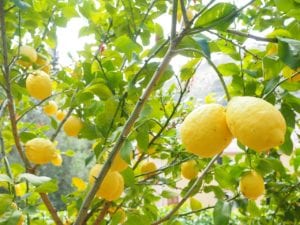
Scent/Flavor: Citrus fruit
Effects/Benefits: Mood enhancement, digestive aid, anti-anxiety, anti-inflammatory, appetite suppression
Fast Facts:
- Limonene works to promote absorption of other terpenes
- Studies have shown Limonene can potentially help combat breast cancer, as well as symptoms of heartburn and acid reflux!
- Found commonly in household cleaners, or almost anything with a lemon scent
Pinene
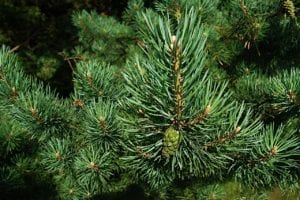 Scent/Flavor: ɑ-Pinene provides the classic pine needle scent, where β-pinene lends more notes of parsley, basil, and dill
Scent/Flavor: ɑ-Pinene provides the classic pine needle scent, where β-pinene lends more notes of parsley, basil, and dill
Effects/Benefits: Memory retention, energy & focus booster, anti-inflammatory, bronchodilator, tumor reduction
Fast Facts:
- Pinene occurs in two primary forms: Alpha-pinene (ɑ-pinene) and Beta-pinene (β-pinene)
- Pinene is likely to give skunk varieties of cannabis much of their odor
- The terpene which occurs most frequently in nature
Linalool
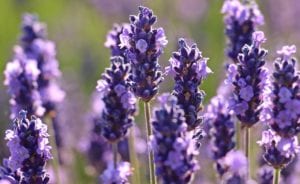
Scent/Flavor: Floral (lavender), light notes of spice
Effects/Benefits: Anti-anxiety, relaxation, sleep aid, anti-convulsant, anti-inflammatory, analgesic
Refined from lavender and other essential oils and is a component of sedating essential oils
Fast Facts:
- Refined from lavender, linalool is used frequently by athletes to enhance endurance and reduce healing times from injuries
- A study showed that linalool could help repair lung damage associated with cigarette smoking
- Linalool is used in approximately 70% off all fragrance products!
Beta-Caryophyllene (β-Caryophyllene)

Scent/Flavor: Black pepper, spice
Effects/Benefits: Anti-anxiety, anti-depressant, anti-fungal, sleep aid, pain management, relaxation, anti-microbial, anti-inflammatory
Fast Facts:
- β-caryophyllene occurs in high quantity in black peppercorns, cinnamon, oregano, and caraway
- A common trick is to eat a few peppercorns to combat any cannabis-related paranoia or anxiety!
Eucalyptol (AKA Cineole)
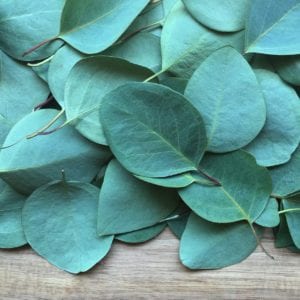
Scent/Flavor: Mint, eucalyptus
Effects/Benefits: Anti-inflammatory, pain management, anti-bacterial, mood/energy enhancement, bronchodilator
Fast Facts:
- Researchers are currently studying cineole for its efficacy as a potential Alzheimer’s treatment!
- Like myrcene, cineole works in tandem with THC to cross the blood-brain barrier more efficiently
Terpinolene

Scent/Flavor: Wood, floral, light notes of citrus
Effects/Benefits: Anti-fungal, anti-bacterial, relaxation
Fast Facts:
- Of all common terpenes, terpinolene is the least prevalent
- One of the only common terpenes which does not have anti-inflammatory properties
Humulene
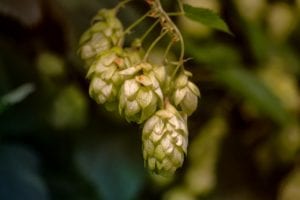
Scent/Flavor: Musk, earth, wood, spice
Effects/Benefits: Anti-bacterial, anti-inflammatory, appetite suppressant
Fast Facts:
- Humulene occurs in hops, lending its distinctive flavor to many beers
- Humulene is one of the primary pest repellants the cannabis plant produces naturally
If you ask us, the synergy between terpenes and cannabis is unbelievably cool. What’s even more fascinating: we know so much already, yet we’ve only just begun to crack the codes of all the different components of cannabis and how they work together!
We also think that learning about terpenes and all they’re capable of can prove to be an invaluable education. Once people start to understand what terpenes are and how they work, they’re able to begin making much more informed decisions about the kind of cannabis they purchase. And we believe making educated choices when it comes to what we’re putting in our bodies is never a bad idea.
Understanding terpenes is a significant piece of the puzzle when it comes to wrapping our minds around how cannabis works, for medical and recreational consumers alike. And while only a few brands may test for terpene content currently*, getting informed now means that when terpene profiles begin to show up all over the market, you’ll already be armed with the knowledge necessary to shop smart!
*As we’re still in the early days of terpene research, only a select few testing labs offer terpene breakdowns – and only a select few cannabis growers and extractors request them. However, that number is growing all the time, and we’re pleased to see it. Here are some of the brands Dockside carries which test for terpenes:
- Lazy Bee Gardens
- Puffin Farm
- Pearl Extract
- Oleum Extracts
- Cascade Gnome
- Dabstract & Avitas (PAX Era Pods)
- Cascadia Gardens
You can shop for these brands by visiting our online menus!
Sources:
- https://strainprint.ca/community/cannabis-terpenes-myrcene/
- https://clinicaltrials.gov/ct2/show/NCT01046929
- https://strainprint.ca/community/understanding-terpenes-limonene/
- https://www.ncbi.nlm.nih.gov/pubmed/18072821
- https://link.springer.com/article/10.2478/s11756-013-0230-2#page-1
- https://strainprint.ca/community/cannabis-terpenes-pinene/
- https://en.wikipedia.org/wiki/Linalool
- https://strainprint.ca/community/cannabis-terpenes-linalool/
- https://www.sciencedirect.com/science/article/pii/S1567576915301089
- https://strainprint.ca/community/understanding-terpenes-beta-caryophyllene/
- https://herb.co/learn/cineole/
- https://www.royalqueenseeds.com/blog-terpinolene-everything-you-need-to-know-n477
- https://www.leafly.com/news/science-tech/humulene-terpene